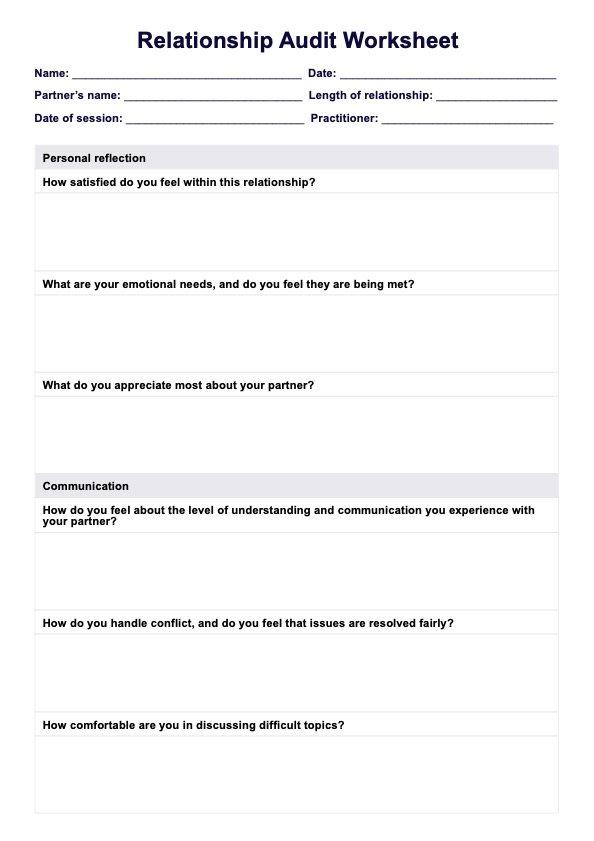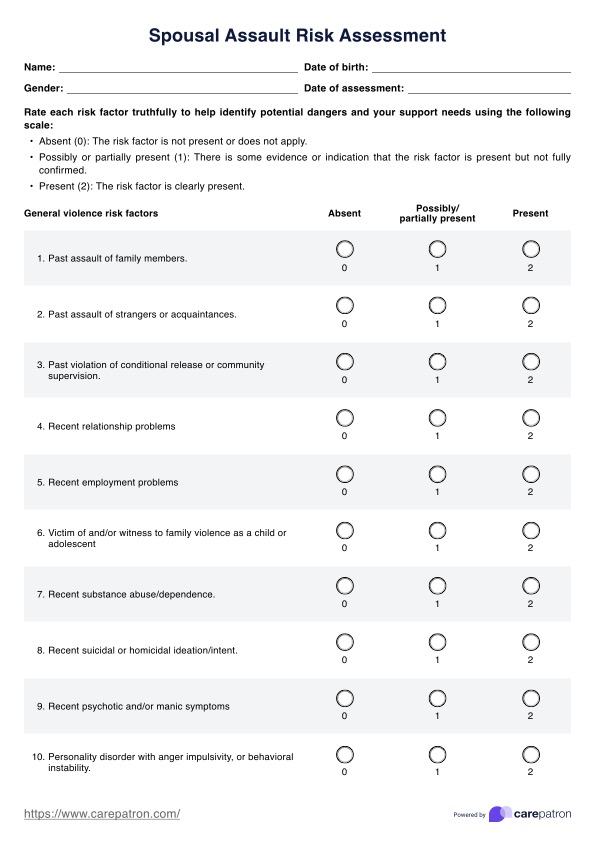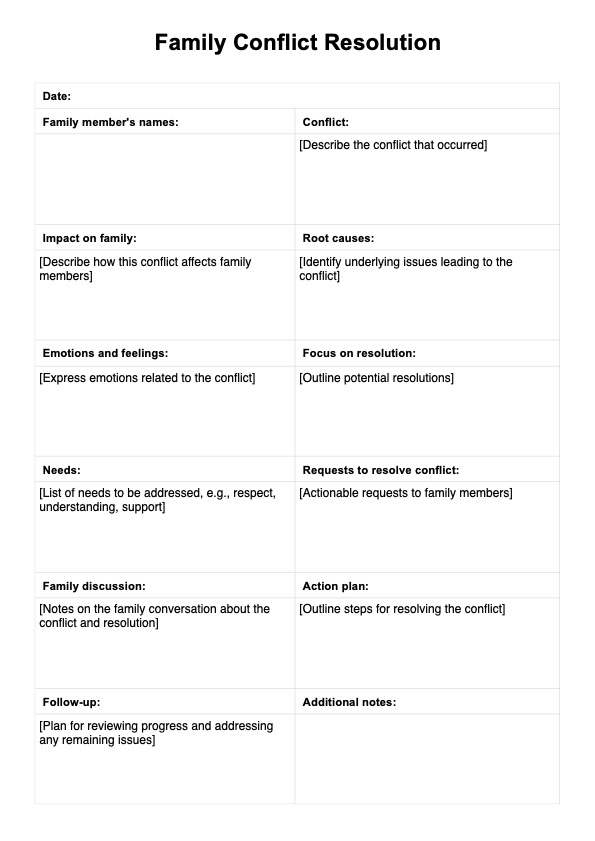Couple Satisfaction Index
Measure relationship satisfaction among clients with the Couple Satisfaction Index. Learn how to administer, score, and interpret results.


What is the Couples Satisfaction Index?
The Couples Satisfaction Index (CSI) is a widely used assessment tool for measuring relationship satisfaction in romantic partnerships. Developed by Funk and Rogge (2007), the CSI offers a more precise and nuanced evaluation of relationship quality than earlier scales.
The CSI comes in a 32-item version and shorter versions of a 16-item and a 4-item scale. This flexibility allows healthcare practitioners to choose the most appropriate version based on their time constraints and assessment needs. CSI also measures various aspects of relationship satisfaction, including communication, intimacy, and overall happiness.
What sets the CSI apart is its strong psychometric properties. It demonstrates high reliability and validity, making it a trusted measure in clinical practice and research settings (Graham et al., 2011). The CSI is particularly valuable for initial relationship assessments, tracking changes in satisfaction over time, and evaluating the effectiveness of couples therapy.
Conducting the CSI is typically recommended at the outset of couples therapy, periodically during treatment, and after therapy to gauge progress and outcomes.
Couple Satisfaction Index Template
Couple Satisfaction Index Example
How to conduct the Couple Satisfaction Index?
Conducting the Couple Satisfaction Index is a straightforward process that yields valuable insights into satisfaction in close relationships. Our template uses the 32-item version. Here's a step-by-step guide on how to administer the CSI:
Step 1: Obtain and prepare the assessment
Download the CSI-32 form from this page or within the Carepatron app by clicking "Use template." Familiarize yourself with the questions and scoring method. Ensure you have enough copies for both partners to complete separately.
Step 2: Administer the assessment
Provide each partner with their own copy of the CSI-32 in a private, comfortable setting. Explain that the assessment consists of 32 questions about their relationship satisfaction. Emphasize the importance of honest, independent responses. Allow sufficient time for completion, typically 10-15 minutes.
Step 3: Score the responses
Use the scoring guide provided with the CSI-32. Remember that most items are scored on a 0-5 scale, except for the first question (0-6 scale). Pay attention to reverse-scored items (6, 10, 15, 26, 28, 30, and 32). Sum all item scores to obtain a total score ranging from 0 to 161.
Step 4: Interpret and discuss results
Higher scores indicate high levels of relationship satisfaction. A score below 104.5 suggests significant relationship dissatisfaction. Review the results with the couple, focusing on areas and dimensions of strength and concern. Use the findings to guide further discussion and inform treatment planning.
Scoring
The CSI-32 can assess relationship satisfaction through a carefully designed scoring system. Here's how to score and interpret the results:
- Most items are scored on a 0 to 5-point scale, with one exception. Item 1 uses a 0 to 6 scale.
- Pay close attention to reverse-scored items 6, 10, 15, 26, 28, 30, and 32. For these, invert the point values (5 becomes 0, 4 becomes 1, and so on).
- Sum the points from all 32 items to obtain the total score.
The total score ranges from 0 to 161 points. Higher scores indicate greater relationship satisfaction. A key threshold to note is 104.5 points - scores falling below this suggest significant relationship dissatisfaction.
When reviewing results with couples, it's crucial to approach the interpretation holistically. While the overall score provides a general indication of satisfaction, examining consistent responses to individual items can offer valuable insights into specific areas of strength or concern within the relationship.
Next steps after using the index
After administering and interpreting the Couple Satisfaction Index (CSI-32), the next steps are crucial for effective therapeutic intervention:
Collaborative review and goal-setting
Thoroughly review the CSI results with the couple, fostering a deeper understanding of their relationship dynamics. Describe positive aspects and areas of significant concern, using the assessment as a springboard for meaningful dialogue. Collaborate with the couple to establish clear, measurable goals for therapy based on the criteria highlighted by the CSI.
Tailored treatment planning
Use the CSI findings to inform a personalized clinical approach. The CSI's validity in measuring various relationship dimensions allows for a targeted treatment strategy. For instance, if the assessment reveals issues with emotional intimacy and sexual satisfaction, focus interventions on rebuilding connection. This tailored approach responds directly to the unique challenges each couple faces.
Integration with complementary assessments
While the CSI provides valuable insights, its utility is enhanced when integrated with other clinical tools. Consider complementing the CSI with analyses from communication style inventories or attachment assessments. This multi-faceted approach offers a more comprehensive understanding of the relationship dynamics, allowing for a holistic treatment strategy that addresses individual and couple-level factors.
Progress monitoring and plan adjustment
Implement a structured approach to tracking progress by periodically readministering the CSI throughout treatment. Use these follow-up analyses to adjust the treatment plan as needed, ensuring that therapeutic efforts align with the couple's changing needs and progress.
References
Funk, J.L., & Rogge, R.D. (2007). Testing the ruler with item response theory: Increasing precision of measurement for relationship satisfaction with the couples satisfaction index. Journal of Family Psychology, 21, 572-583. https://doi.org/10.1037/0893-3200.21.4.572
Graham, J. M., Diebels, K. J., & Barnow, Z. B. (2011). The reliability of relationship satisfaction: a reliability generalization meta-analysis. Journal of Family Psychology, 25(1), 39–48. https://doi.org/10.1037/a0022441
Commonly asked questions
Relationship satisfaction can be measured using various tools and methods, including self-report questionnaires and surveys that assess individuals' feelings about their relationship dynamics. Commonly used instruments include the Dyadic Satisfaction Scale or the Couples Satisfaction Index, which evaluate aspects such as emotional connection, communication quality, and overall happiness within the relationship.
Effective communication is often considered the best predictor of relationship satisfaction. Other important factors include emotional support, conflict resolution skills, and shared values or goals, all of which contribute to a healthy and fulfilling partnership.
Relationship satisfaction is important because it significantly impacts individuals' mental and emotional well-being, influencing overall happiness and life satisfaction. High levels of relationship satisfaction are associated with lower stress levels, better physical health, and improved emotional resilience. Additionally, satisfying relationships can foster a sense of belonging and support, which are crucial for personal development and coping with life's challenges. Conversely, low relationship satisfaction can lead to negative outcomes, including anxiety, depression, and decreased quality of life.


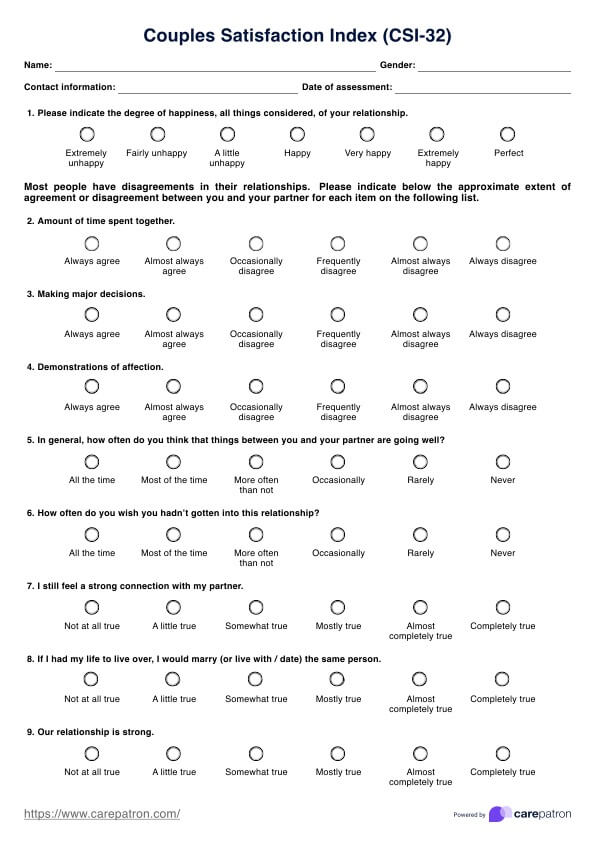
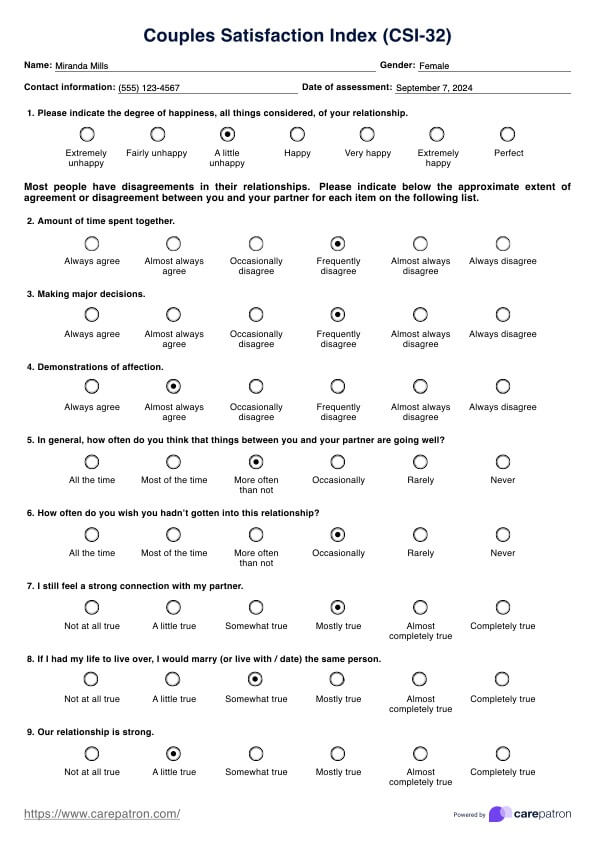
















-template.jpg)


